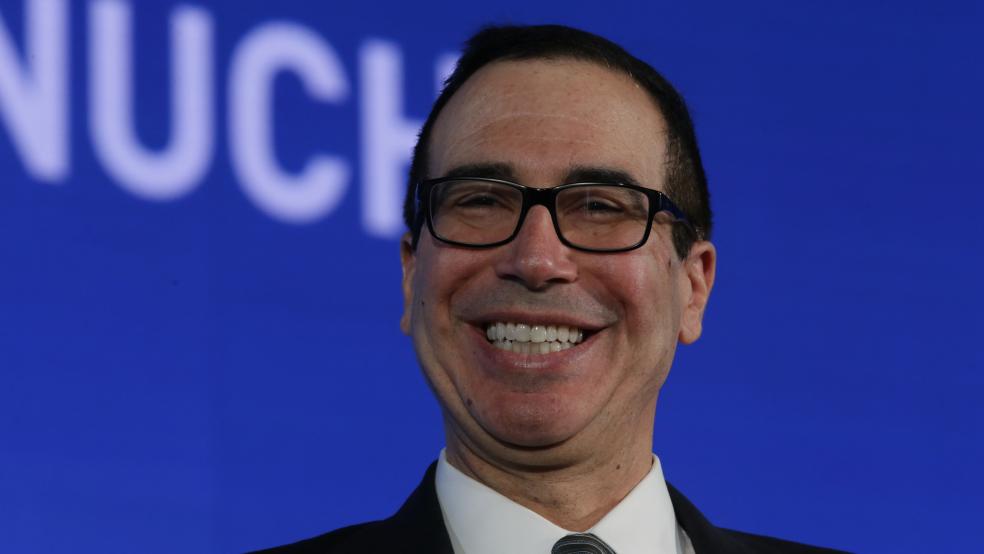Treasury Secretary Steven Mnuchin has long claimed that tax cuts will pay for themselves through faster economic growth. On Sunday, Mnuchin told CNN that the GOP tax bill will generate “$2.5 trillion of growth,” enough for the plan to “break even.” Mnuchin has also claimed at various times that the tax cuts will generate excess tax revenue, enough to reduce the national debt: “Not only will this tax plan pay for itself, but it will pay down debt,” he said in September.
Mnuchin isn’t alone in this belief, which is something of an article of faith among tax-cutting supply-siders. Sen. Pat Toomey (R-PA) said on Meet the Press this past Sunday: “If we pass this tax reform package in something like its current form, we will reduce the size of the deficits. We will have smaller debt than we otherwise would.”
But there’s little evidence that tax cuts pay for themselves, and lots of evidence that they don’t. In the current GOP tax effort, independent analyses of the House and Senate tax bills have found that both would increase deficits significantly. The Joint Committee on Taxation says that the Senate tax bill cost $1.5 trillion in lost revenue over 10 years, and the House bill cost $1.4 trillion over the same period.
Dynamic scores of the bills, which include economic feedback from the tax cuts, also show larger deficits in the wake of the bills, though to different degrees depending on the model used. For example, the Penn Wharton Budget Model shows the House bill increasing deficits by $1.4 trillion to $1.7 trillion over a decade, with the revenue loss growing beyond the 10-year window, while the Tax Foundation’s model shows that the House bill would generate $1 trillion in new red ink, even after including dynamic growth effects. The Senate bill fares a bit better, but increased deficits are still projected well into the future by both models. (The only model that shows the tax plans paying for themselves is the one used by Laurence Kotlikoff of Boston University, but his projections have received little support from other economists.)
Discussing the tax cuts at the Wall Street Journal CEO Council on Monday, Mnuchin was asked if Treasury would release economic projections to back up his claim. He said, “Treasury already has. We’re going to have outside groups do it.” This somewhat confusing comment — is there an economic model used by the Treasury Department that shows tax cuts paying for themselves, and if so, where is it? Or are “other groups” going to provide the proof? — set off a not entirely serious search for Treasury’s lost economic paper. Catherine Rampell tweeted, “Huh? Where?” And Seth Hanlon of the Center for American Progress provided contact information for the press office at the Treasury Department, saying “I'd urge reporters to call and ask for a copy of this (nonexistent) analysis.” Treasury has yet to supply the missing economic projection.




